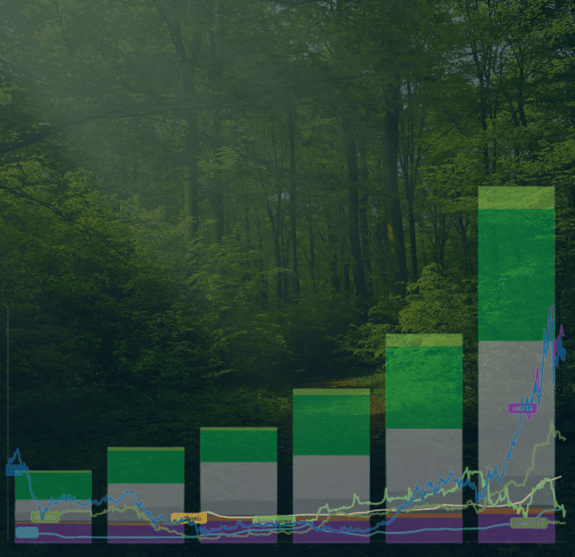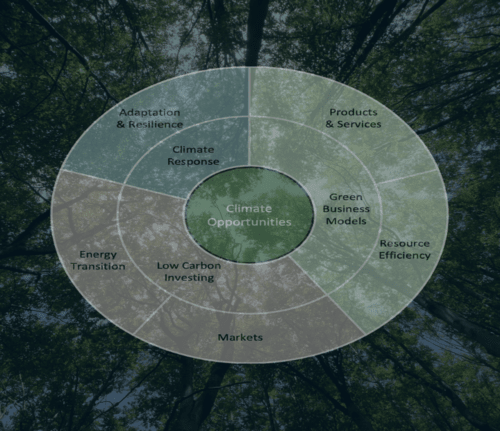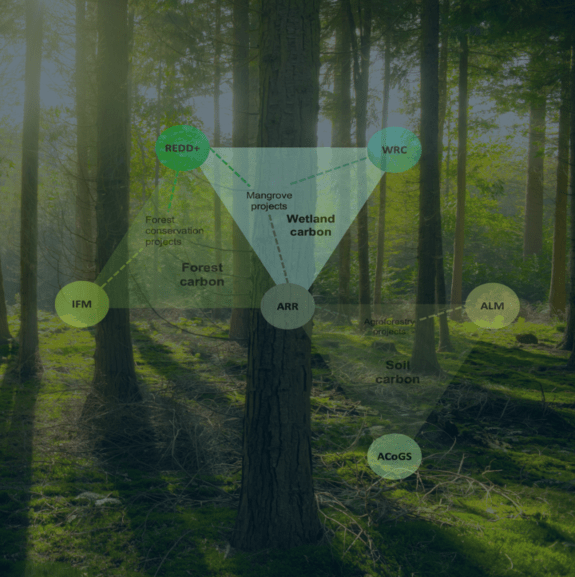
Strategic Guide to the Voluntary Carbon Market Ecosystem
Last updated: September 2022
This guide provides a comprehensive overview of how the voluntary carbon market operates today.
The voluntary carbon market provides an opportunity for organisations to accelerate their efforts to reduce their climate impact. Many firms, however, have no or limited experience of carbon markets.
This guide provides such firms with an introduction to the voluntary carbon market ecosystem. It explains the market’s history, how it differs to regulated markets, why it is growing fast, how carbon credits are created and transacted, and gives some examples of the different organisations operating in the market today. More detailed insights on the voluntary carbon market ecosystem are available to Trove’s subscribers and advisory clients.
Strategic Guide to setting corporate climate targets and the use of carbon credits
Last updated: October 2022
This guide provides an ongoing guide for companies when setting corporate climate targets and the use of carbon credits.
It is structured as a series of ‘frequently asked questions’ that often arise in our discussions with corporate clients and through our interactions with key non-governmental organisations, think tanks and investors.
For each topic area and question we provide our most up to date assessment of the state of play and the potential ‘direction of travel’. The issues identified and maintained in this document will evolve over time as guidance is updated.


STRATEGIC GUIDE ON CLIMATE DISCLOSURES
Last updated: April 2023
This report provides a guide for companies or other stakeholders unfamiliar with the process or complexities of disclosing climate-related information.
It is structured as a series of ‘frequently asked questions’ that often arise in our discussions with corporate clients and through our interactions with investors, non-governmental organisations, and other stakeholders.
For each topic area and question we provide our most up to date assessment of the state of play and the potential ‘direction of travel’. The issues identified and maintained in this document will evolve over time as guidance is updated.
INTRODUCTORY GUIDE TO FORESTRY CARBON
Last updated: January 2024
This guide answers the 10 most frequently asked questions about forest carbon in the voluntary carbon market.
Forest biomes play an important role in moderating atmospheric CO₂, protecting biodiversity, and supporting local livelihoods. Forest carbon projects were responsible for 29% of all carbon credit issuances in 2023 and make up over 93% of nature-based projects. Despite this there is still limited understanding on how these projects work, what risks they have, and how they differ from one another.
This guide provides a comprehensive overview over forest carbon projects in the voluntary carbon market. It explains the nature and extent of forest carbon, the different types of forest carbon projects, and the potential future role of forest carbon in the voluntary carbon market.
An expanded guide with more information on jurisdictional REDD+ and forest carbon integrity will be published soon.
Please contact us here to subscribe


Guide to CORSIA and Aviation Decarbonisation
Last updated: February 2024
This guide provides a comprehensive overview of the CORSIA scheme and aviation decarbonisation as it stands today.
The Carbon Offsetting and Reduction Scheme for International Aviation (CORSIA) established by ICAO was a response to address emissions from international aviation. The aim of CORSIA is to limit emissions to 2019 levels using carbon offsets - until other decarbonisation solutions, such as sustainable aviation fuels and technology enhancements mature.
As with many international regulatory schemes, there is a great deal of complexity to the practical implementation of the scheme causing a lack of understanding amongst stakeholders.
This guide answers frequently asked questions around the climate impact of aviation, the implementation and regulation of the CORSIA scheme, where the supply of credits will come from and explores the potential contribution of other aviation decarbonisations levers, such as sustainable aviation fuels and new technologies developments.
Please contact us here to subscribe

